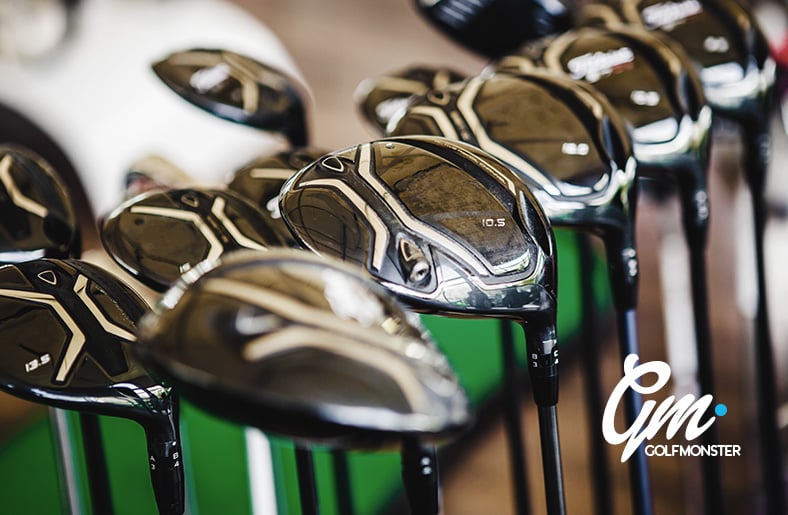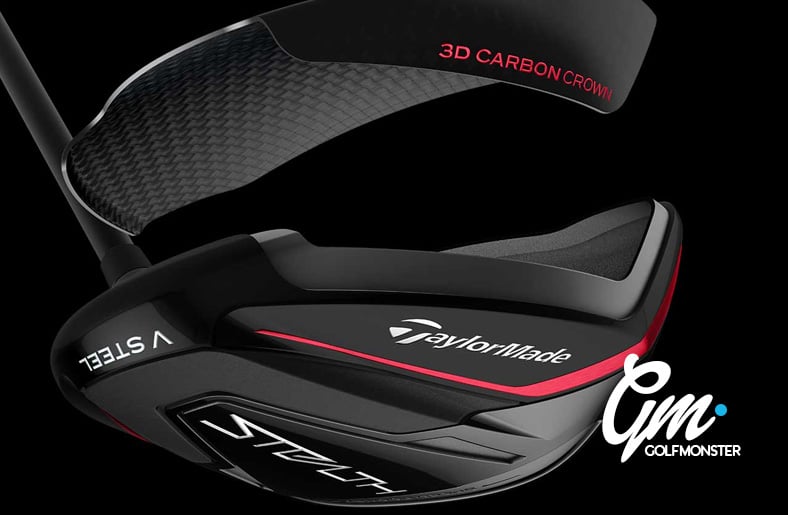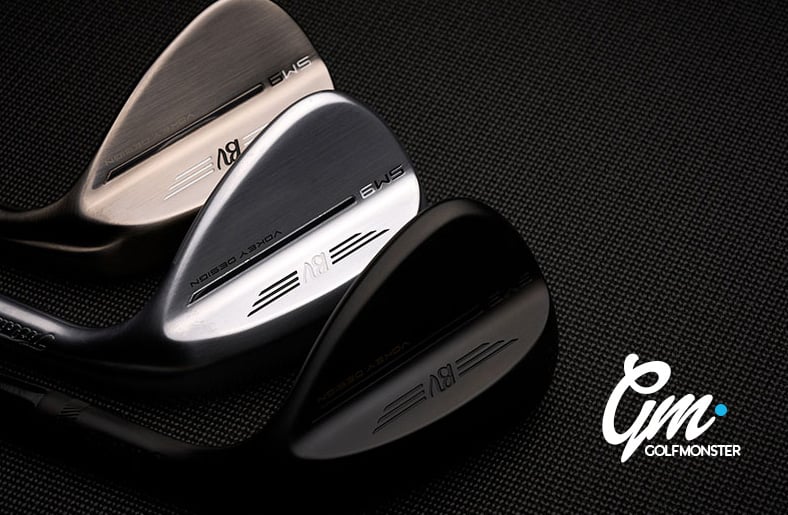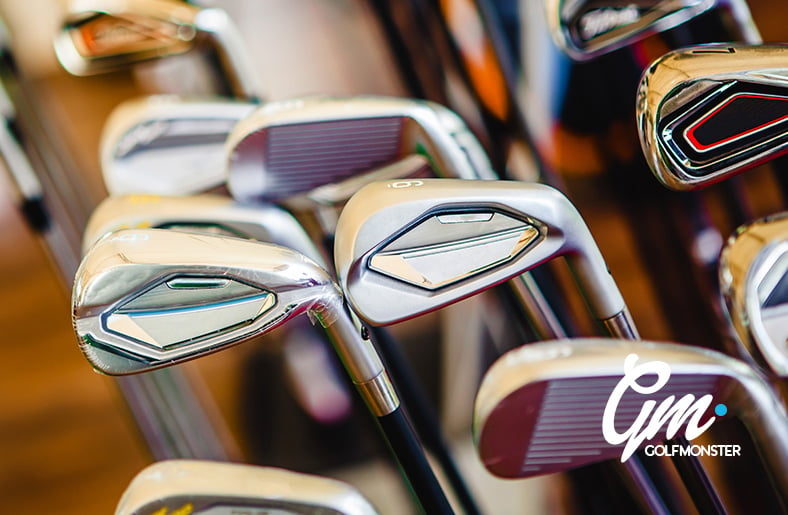Well, the time is here; you’ve been looking forward to this for quite some time now; yep, it’s time to get yourself a new set of clubs.
Professional, top amateur, high handicapper, or rank beginner, it doesn’t matter; choosing the right set of clubs is a serious decision. You’ll either remember it as changing your game for the better or a decision you’ll live to regret.
The trouble is, when it comes to buying a set of clubs, most golfers don’t even know where to start. With numerous expensive high-end brands, various types of irons, wedges, and drivers, selecting the right set of irons can be a daunting task.
Questions abound, which brand should I purchase? How many clubs do I need? Do I need a hybrid? What about fairway woods or a lob wedge? You get the gist. But the reality is these questions, and others need to be considered if you’re to end up purchasing the right set of clubs.
A good set of clubs can set you back $1000s, and even for a mid-range set, you’re looking between spending $400-$500. This article will provide you with the necessary advice and information to confidently purchase a set of golf clubs that are right for you.
Let’s jump into it!
First Things First: What You Need to Consider
Contents
Before making any purchase of significant importance and value, several factors always need to be considered; and with a set of golf clubs, it’s no different. Below, I’ve compiled a list of some of the factors you’ll need to consider before spending your hard-earned cash.
Don’t Rush It
The first time you step into a golf shop or your local pro shop, you’ll undoubtedly be overwhelmed by the sheer number of clubs to choose from. Brands like Taylor Made, Titleist, Ping, and Callaway all make the task even tougher with their state-of-the-art clubs and big-money marketing that jumps out at you.
The key here is not to panic; ask the staff questions and pick their brains; most staff in golf shops are very well-versed in the game, and most of them are also expert club fitters, so don’t be afraid to ask.
Nowadays, many golf shops also have testing areas that let you test various clubs and brands before signing that big fat cheque. Taking your time and doing your research will help guard against any spur-of-the-moment purchases.
Don’t Be Fooled
Now, I’m not saying you shouldn’t purchase a set of clubs from one of the well-known manufacturers; what I’m saying is, don’t pigeonhole yourself into thinking they’re the only option.
Golf technology has improved in leaps and bounds over the last decade, meaning numerous well-established brands on the market produce high-quality clubs at an affordable price. It’s easy to watch your favorite players carrying the latest Callaway’s or Ping’s and thinking to yourself, If I had a set of those, surely my handicap would improve, right?
But as I said, if a set of Callaways or Titleist ends up being the right set of clubs for you, great, but remember, other brands can offer similar quality a half the price.

Grip it and Rip It
Choosing the correct grip or even thinking about it is something most amateur golfers are completely oblivious to.
Ensuring you have the right grip size can significantly impact your game. Choose a grip that’s too big, and your hands are restricted, meaning less control over the clubhead. The opposite is true when it comes to small grip; a small grip leads your hands to be “overactive,” translating into less control.
The feel of the grip is also a factor that many golfers overlook. Making sure the grip feels comfortable in your hands is just as important, if not more so. Although that being said, changing your grips over is a relatively straightforward job for most golf shop staff.
Top Tip: There should be sufficient space between your ring and middle finger when selecting the correct grip size. If you cant, touch your thumb with those fingers, then the grip is likely too big.
Shaft Specifications
Ensuring you choose the correct shaft length is probably the most critical factor you’re going to have to consider when purchasing a set of clubs. Although this is a pretty obvious consideration, you’d be amazed at how many golfers underestimate the importance of shaft length.
Taller players generally require longer shafts, while shorter players require shorter shafts; I know what you’re thinking; thanks for pointing that out, Captain Obvious. But in reality, choosing the correct shaft length and flex requires some pretty vital considerations.
Factors to consider when choosing the right shaft
- The style of your swing
- Your body type
- Your height
- Current handicap and
- Physical strength
The shaft flex has a significant impact on your ball flight, so taking the time to get it right is paramount. A shaft that’s too stiff results in a lower ball flight generally preferred by the pros, while a softer flex shaft helps beginners get the ball airborne quicker.
Another telltale sign of incorrect shaft flex is stiffer shafts typically result in a “slice,” while shafts that are too soft result in the dreaded “snap hook.”
Lofty Goals
The loft is another critical factor or “spec” to consider when buying your new golf clubs. The loft is the angle created by an imaginary line down the shaft and the clubface.
The loft of golf clubs is measured in degrees that can range from 20 degrees all the way to 60 degrees. Think about the loft of a three iron which is typically 21° to 23°; this measurement of loft results in a lower ball flight but increased distance. At the other end of the loft spectrum would be a lob wedge of 60°; this will result in a much higher ball flight with a significant decrease in distance.
A club with a lower loft will look much flatter to the naked eye, while its lofty counterpart will appear almost horizontal. When considering loft, be sure to take into account your typical ball flight and shape, as these two factors will significantly influence your ideal loft.
Clubhead
Similar to a tennis racquet, the head of a golf club can come in many different shapes and sizes.
Typically speaking, larger heads provide a bigger hitting surface area and offer an amazing amount of forgiveness. Smaller club heads or “blades” are generally only used by professionals or low handicappers. These smaller heads make it challenging to hit the sweet spot, but let me tell you, there’s no better feeling than hitting one right out of the middle of an old-school blade.
Foy your average club golfer, I would recommend staying away from the smaller heads and instead opting for a larger or even oversized version for greater comfort and forgiveness. You can always upgrade when your handicap improves.
Beginners Golf Clubs
There’s no denying it; golf is a pretty expensive sport to play on a regular basis. Club membership fees, expensive clothing, shoes, round fees, motorized cart, and let’s not forget a set of golf clubs.
A good quality set of sticks can set you back a pretty penny, but the question here is, as a beginner, do you really need the latest and most expensive clubs in the pro shop? In all honesty, the answer is probably no, but hey, if you’ve got the money to splurge, then why not. Like my dad used to say. “If my game stinks, I might as well look good while playing it.” Trust me, his game stunk.
Ok, let’s get serious; if you’re new to the game, one of the best ways to get started is by asking a friend to borrow their clubs. This way, you have no outlay; well, not until you catch the inevitable golfing bug.
Another alternative is purchasing second-hand clubs from your local pro shop or searching online through the various marketplaces. If you look hard enough, you can find a good set of used sticks for $150-$200.
A typical beginners set might look something like this:
- Driver and three wood
- Three iron
- Five iron
- Seven iron, nine iron and a
- Putter
Again, when it comes to choosing the type of shaft, it’s down to personal preference. You’ll have an option between steel and graphite. I would suggest opting for steel shafts, as they offer good durability at an affordable price.
Low Handicappers and Intermediate Golfers
Here’s where choosing your golf clubs can become exciting, tricky, and, if you’re not too careful, expensive.
You obviously enjoy the game, and at this stage, it’s probably more than just a hobby. Now you can take deep dive into having your club’s “custom-fitted,” which is costly but can make a world of difference. Custom clubs are also an excellent option for intermediate players and could be the bridge between a 12 and a 5 handicap.
Custom fitted clubs take into account factors like your swing plane, body size, height, arm length, ball flight, and physical strength, to name a few. You can tailor the shafts to suit your game, play around with the loft and lie, and even experiment with the length of the clubs.

Types of Clubs
There are several different types of golf clubs, so lets take a quick look at the important points to consider when selecting each club.
The Driver
The king of the hill, the big dog, the big kahuna, no club in the bag commands the respect the driver does.
Drivers are the one club in the bag that puts fear into the eye of the high handicapper and rank beginner. With the largest head size allowed measuring in at 460cc, the driver can make or break the hole. A solid drive and you’re looking at birdie; shank it, and you’re staring down double bogey.
Drivers are made from several types of high-quality materials, such as carbon and titanium. These materials are much lighter than steel, and as such, manufacturers are able to design and develop larger clubheads. The driver’s loft, along with your clubhead speed, can also vary between 7° and 12°, both of which significantly affect your ball flight.
Swing speeds and loft:
- Slow Swing Speed: Choosing a loft between 12° and 13° is recommended here; perfect for junior, beginner, and senior players
- Medium Swing Speed: Generally suitable for intermediate players and ranges in the loft from 9° to 11°
- Fast Swing Speed: Ideal for low handicappers and professional players; loft is in the range of 8° to 9°

Fairway Woods
Fairway woods can help transform your game, but first, you need to understand what each wood does and, more importantly, how they can help your game.
Fairway woods come in three, five, and seven variations, each playing different roles in your game. The numbers of the clubs refer to the loft, meaning the higher the number, the higher the loft. The higher numbers also indicate the shorter the shaft length of the club.
Fairway woods are available in steel or graphites shafts. Steel shafts lend themselves to a much lower penetrating ball flight, while graphite shafts are perfect for those looking to bomb it long.
Fairway woods material options:
- Composite, which combines steel and carbon, making for a forgiving soft hitting experience
- Steel, cheap, durable, reliable, and still the most popular
- Titanium, perfect for hitting off the tee with a three wood and helps get the ball airborne quicker

Irons
You’ll notice your set of new clubs will be made up of primarily irons, ranging from 2 or 3 iron up to 9 iron. As with fairway woods, the lower the number, the more distance is gained, but the more difficult it is to control the ball.
A well hit 3 iron, for example, might reach 220 yards while a 9 iron or pitching wedge travels around 130-150 yards. There’s roughly a 12 to 15-yards difference between each of the irons, so ensuring you know how far you hit each iron is paramount to your success.
Irons are either “cast” or “forged,” and when it comes to their feel and playability, they couldn’t be further apart.
- Low handicappers or professionals generally use forged irons; These clubs are difficult to strike out of the center but offer a far superior feel to the cast iron.
- Cast irons are a forgiving iron and target high-handicappers and beginner golfers. Cast irons offer players comfort and forgiveness when mishitting a shot.

Wedges
Arguably one of the most underrated clubs in the bag, the wedge is absolutely critical to posting a good score. Wedges are available in four different degree variations.
- The Pitching Wedge, which is generally used when 100-120 yards out
- The Gap Wedge has a loft of between 50° and 55° and fills the gap between pitching and sand wedge
- Sand Wedge, used out of the bunker, and finally
- The lob wedge comes with a 60° or higher loft and is ideal for hitting over bunkers, small trees, or other impediments.

Putter
As the old saying goes, “drive for show, putt for dough.” The putter is where the rubber hits the road. You’ve bombed a drive off the tee, striped a three-iron from 220 yards to 6 feet, and now you’re staring down a rare chance at an eagle.
Putters come in varying shapes, sizes, materials, and price points ranging from $50 right up to $500 – $600.
Putter shapes and designs:
- Mallet, shaped as the name suggests, the mallet putter is the heaviest of all the putters and comes equipped with lines etched on top of the head, designed to help align putts.
- The Blade putter is an old-school, traditional style with no fancy markings or alignment tools.
- The half mallet is a cross between the full-mallet and the blade putter; the half mallet offers the golfer a nicely weighted putter that’s easy to stroke.


